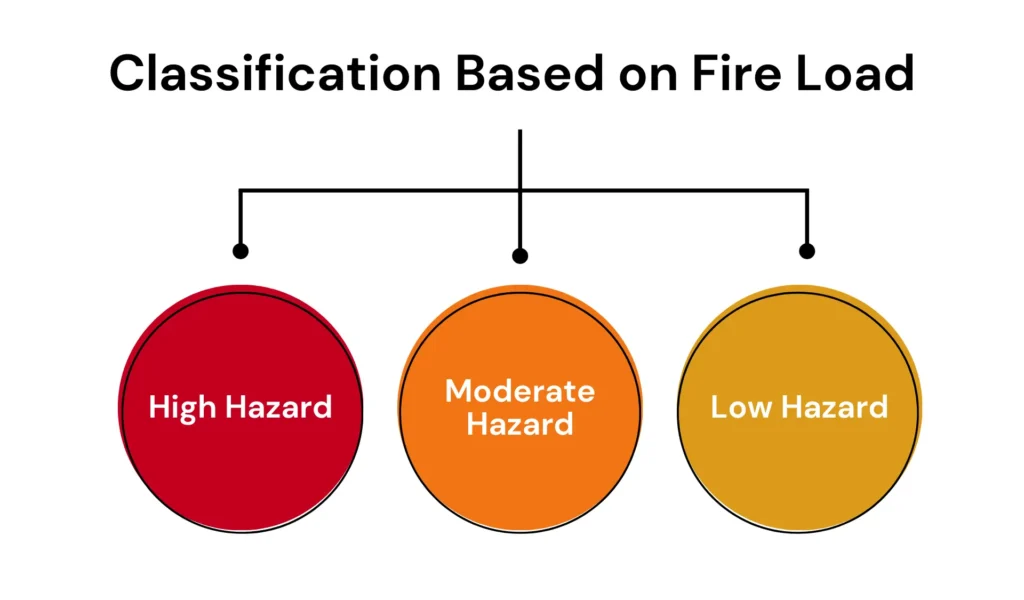Fire Load Calculation
Crucial insights into fire risks and enabling the implementation of effective safety measures with Fire Load Calculation. At Wire Consultancy, we specialize in accurately assessing the heat release rates and identifying potential fire hazards associated with various materials and occupancies through our Fire Load Calculation service. By analyzing the fire load characteristics of your premises, we empower you to make informed decisions about fire protection systems, evacuation plans, and fire prevention strategies.
We Strive to Drive
Safety Culture

Trusted by






































































Fire Load Calculation | Fire Load Assessment
Fire Load Calculation is the process of measuring the total amount of combustible material present in a specific space or building. This involves:
- Identifying combustible materials: Wood, plastics, textiles, and even certain liquids fall under this category.
- Quantifying their weight: Every kilogram of these materials translates to potential fuel for a fire.
- Applying calorific values: Each material has a specific “heat release” value, indicating how much heat it generates when burned.
- Calculating fire load: Multiplying weight by calorific value for each material and adding them together gives you the fire load in kilojoules per square meter (kJ/m²).
Fire load Calculation is instrumental for a multitude of reasons such as when evaluating active and passive protection systems required in a building, conducting fire scene investigations, modeling the movement of fire, smoke, and gases in buildings, and assessing insurance premiums. They are also useful in establishing building risk profiles when preparing fire safety risk assessments.
Classifications of Fire Load Calculation
1. High Hazard
These occupancies hold the highest potential for rapid and intense fires due to the presence of large quantities of highly flammable materials. Think factories storing plastics, chemical plants, or warehouses brimming with textiles. Here, fire load typically exceeds 550,000 kcal/m² (220,000 Btu/ft²), necessitating robust fire protection measures like sprinkler systems, fire walls, and specialized ventilation systems.
2. Moderate Hazard

Occupancies in this category fall between the extremes, housing a moderate amount of combustible materials. Examples include retail stores with stocked shelves, offices with furniture and equipment, or multi-story car parks. Their fire load ranges from 275,000 kcal/m² (110,000 Btu/ft²) to 550,000 kcal/m², requiring a balanced approach to fire safety. Automatic sprinklers are often mandatory, along with adequate separation between compartments and clear evacuation routes.
3. Low Hazard
These occupancies pose the least fire risk due to limited combustible materials. Think residential buildings, libraries with mostly non-flammable materials, or churches with primarily stone and concrete structures. Their fire load sits below 275,000 kcal/m² (110,000 Btu/ft²), allowing for simpler fire safety measures like smoke detectors, portable extinguishers, and clear escape routes.
Why Fire Load Calculation is so Crucial?
Fire load directly impacts the intensity and spread of a potential fire. Knowing the fuel available helps us design effective fire protection measures like:
- Sprinkler systems: The intensity of a fire determines the required water flow for effective suppression.
- Fire walls: These barriers limit the spread of fire by compartmentalizing spaces based on fire load.
- Building materials: Fire-resistant materials can slow down or even prevent the spread of fire.
- Evacuation planning: Knowing the potential fire growth rate helps design safe exit routes.
Benefits of Fire Load Calculation
- Fire Load Calculation plays an important role in determining the basis for the assessment and mitigation of fire risks for any industry. This indicates how much heat is released per unit area for a site when its contents and the area are completely burned.
- In engineering theory and by compliance, all fire systems of infrastructure should be designed based on total fire load. This fire load is calculated for all flammable substances present and their calorific values.
- There are several methods for Load Calculation and can be utilized on a case-to-case base such as Weight Inventory or a combination of both. There are other several associated exercises that help in the better design of a fire system such as the categorization of fire load in various categories, allocation of fire fighting equipment and resources based on respective loads of areas, etc.
Fire Load Calculation Standards
- NFPA 557 Standard for Determination of Fire Loads for Use in Structural Fire Protection Design
- IS 1646 Indian Standard Code of Practice for Fire Safety of Buildings (General): Electrical Installations (Second Revision)
- BS EN 1991-1-2:2002 Actions on structures exposed to fire
- NBC 2016 National Building Codes 2016
Wire Consultancy Offers Fire Load Calculation Services for Optimal Fire Protection
At Wire Consultancy, we offer fire load calculation services to help assess fire risk and design an appropriate fire protection system. Our team of experts is equipped with the latest tools and technologies to accurately determine the fire load of a space, taking into account factors such as the type of materials used, the layout of the space, and the occupancy of the building. We provide detailed reports outlining our findings and recommendations for fire protection measures, such as fire suppression systems, fire alarms, and emergency evacuation plans.
Similar Services
Contact
Feel free to contact us for any questions and query
Connecting with Us is Just a Click Away – Let’s Begin Your Project Hassle Free.
Our team of experienced consultants is ready to collaborate with you to achieve your engineering, safety and sustainability goals. Get in touch with us to learn more.
Our Presence
Noida
Office-03, First Floor, D-53, Sector-2,
Noida, Uttar Pradesh-201301, India
Hyderabad
SF-LM-13, Lumbini Jewel Mall
Banjara Hills Road no 2
Hyderabad 500034
For Business Enquiry
For HR Enquiry
hr@wireconsultants.com
+91-7827931701
Copyright © 2024 Wire Consultancy | All Rights Reserved
